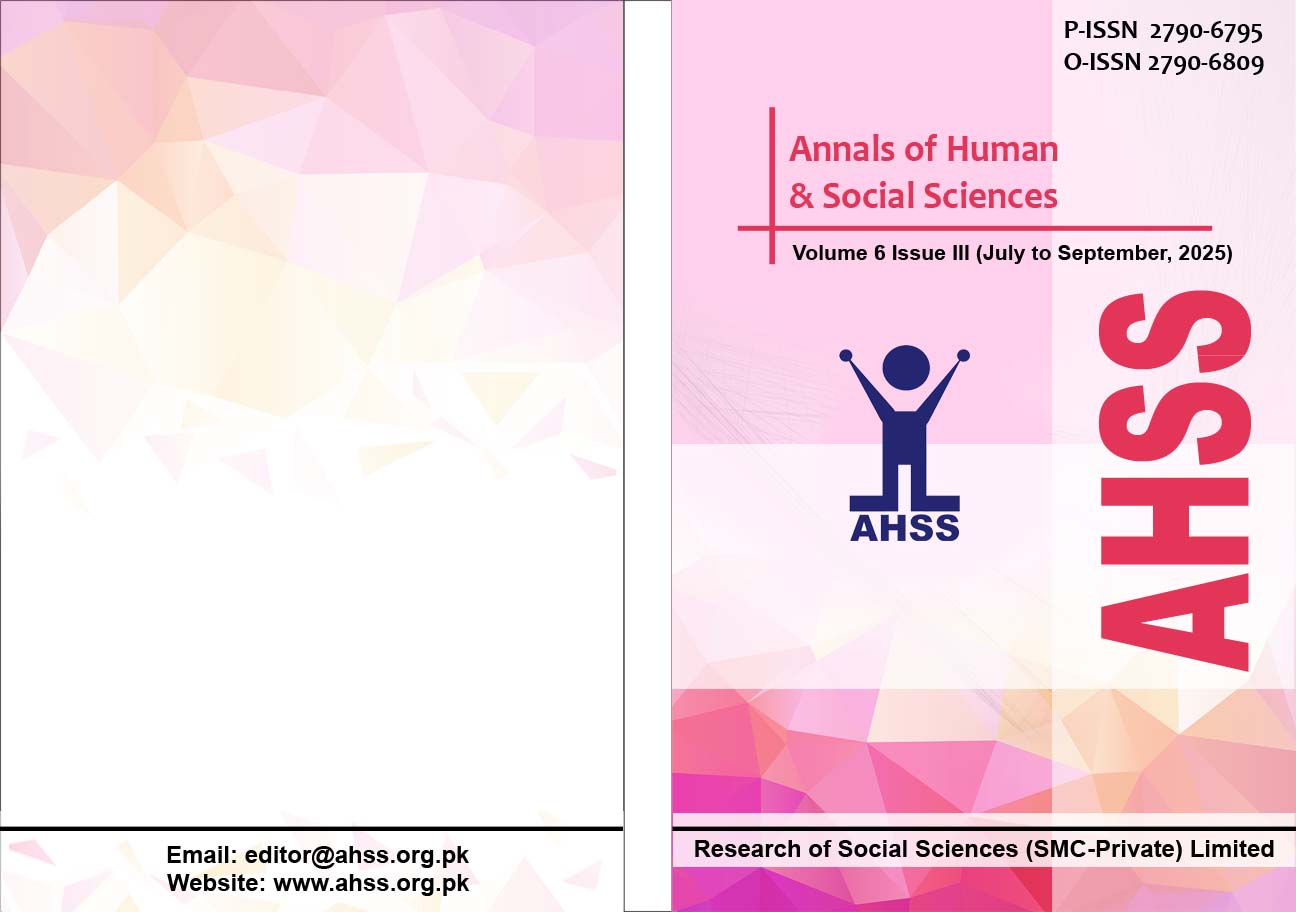Teachers’ Personality Traits at Secondary Level: A Diagnostic Study
DOI:
https://doi.org/10.35484/ahss.2025(6-III)45Keywords:
Big Five Personality Traits, Secondary School Teachers, Agreeableness, Conscientiousness, Openness, Extraversion, NeuroticismAbstract
The current study assessed the personality traits of secondary school teachers in the Gujranwala division of Pakistan using the Big Five construct, with consideration of the most significant traits and sex differences. A stratified random sample of 624 teachers (312 males and 312 females) in three districts was drawn randomly. The information was gathered through a self-designed Teacher Personality Traits Questionnaire (TPTQ) that assessed openness to experience, conscientiousness, extraversion, agreeableness, and neuroticism. the data were presented in the form of percentage frequency, mean and standard deviation. The results showed the strongest traits to be agreeableness, openness, and conscientiousness, and the weakest one was neuroticism. Women teachers received higher ratings in agreeableness and conscientiousness measures, and men were more open. The parity of Extraversion was held steady among both genders and was in harmony with the notion of harmonious socialization These results suggest that secondary school teachers have qualities that allow them to be good teachers with a good classroom climate and student-centered instruction. The article proposes reflecting on personality development during teacher training, supporting emotional resilience, developing pedagogical innovations and developing group work to enhance general education effects.
Downloads
Published
Details
-
Abstract Views: 134
PDF Downloads: 148
How to Cite
Issue
Section
License
Copyright (c) 2025 Annals of Human and Social Sciences

This work is licensed under a Creative Commons Attribution-NonCommercial 4.0 International License.

RESEARCH OF SOCIAL SCIENCES (SMC-PRIVATE) LIMITED(ROSS) & Annals of Human and Social Sciences (AHSS) adheres to Creative Commons Attribution-Non Commercial 4.0 International License. The authors submitting and publishing in AHSS agree to the copyright policy under creative common license 4.0 (Attribution-Non Commercial 4.0 International license). Under this license, the authors published in AHSS retain the copyright including publishing rights of their scholarly work and agree to let others remix, tweak, and build upon their work non-commercially. All other authors using the content of AHSS are required to cite author(s) and publisher in their work. Therefore, RESEARCH OF SOCIAL SCIENCES (SMC-PRIVATE) LIMITED(ROSS) & Annals of Human and Social Sciences (AHSS) follow an Open Access Policy for copyright and licensing.






